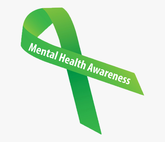Mental Health Awareness
The assignments that have activities are in red.
Preparation:
1. The 9 numbered mental health disorders need to be written on the 9 different large white post-its, one per post-it.
2. Place them around the room on the wall.
3. The 10th white wall post-it will have “Other” written on it for any disorder that is not listed on the other 9.
List of Disorders: This is not a comprehensive list of illnesses. The tenth post-it on the wall is for students to write down any illness that is not listed here.
1. The 9 numbered mental health disorders need to be written on the 9 different large white post-its, one per post-it.
2. Place them around the room on the wall.
3. The 10th white wall post-it will have “Other” written on it for any disorder that is not listed on the other 9.
List of Disorders: This is not a comprehensive list of illnesses. The tenth post-it on the wall is for students to write down any illness that is not listed here.
|
|
Activity
Talk More
• Students can click on the buttons to learn more about the different illnesses. • Take notes on the symptoms and how it impacts the individual and society. • Discuss some of the stigmas that might be associated with the illness/disorder. Conversation Starter Questions
• How did it feel to participate in this exercise? • Does anyone want to share how the illness has impacted the person and those they know? • Do you, or the person you know, talk about the illness? |
|
Warning Signs
Mental Health Stats
A.I. Diagnosis
|
Click on the poster for Spa Music 3:01
|


